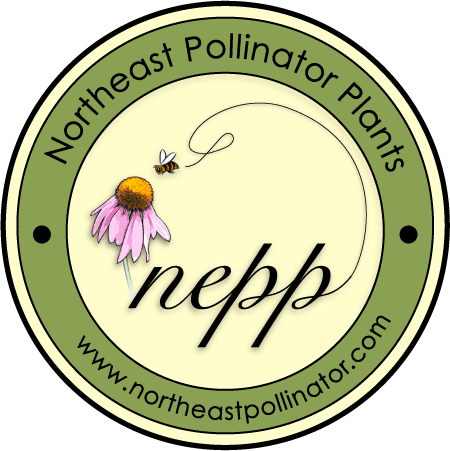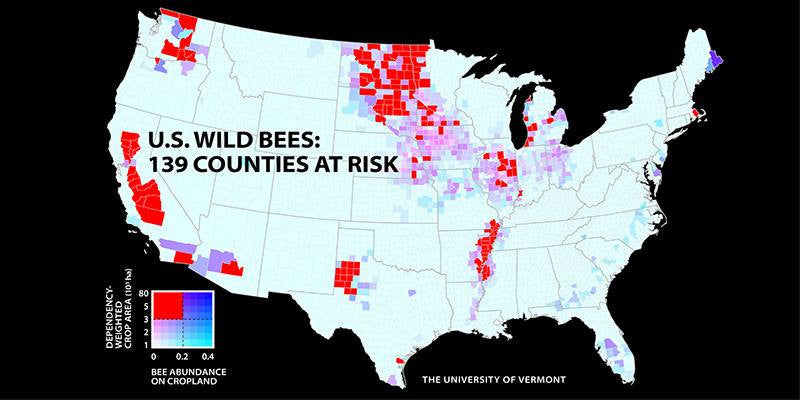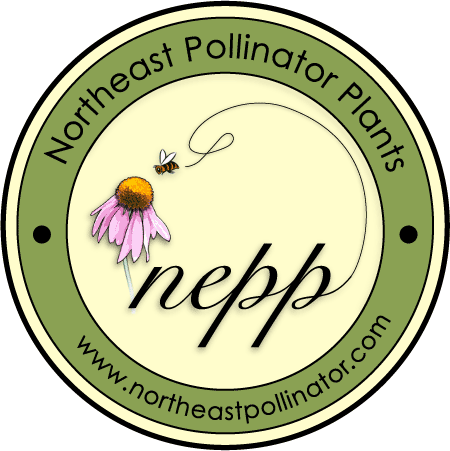Welcome to Northeast Pollinator Plants
Mapping Model Estimating Wild Bee Populations
Research team led by two UVM pollinator experts, Taylor Ricketts and Insu Koh, develop a mapping model for estimating threatened wild bee populations nationally."...identifies 139 counties in key agricultural regions of California, the Pacific Northwest, the Midwest, west Texas and the Mississippi River valley that face a worrisome mismatch between falling wild bee supply and rising crop pollination demand."Read the full article here: https://www.uvm.edu/~uvmpr/Page=news&&storyID=22053 northeastpollinator.com for checking out our on-line plants for pollinator nursery.
Sizing a Pollinator Garden
Xerces Society, the foremost organization for promoting pollinator conservation, has these recommendations for sizing a pollinator garden with the goal of providing efficient foraging for the greatest diversity of pollinators: Plant at least 8 plants each of 9 carefully selected native perennial species with 3 flowering early, 3 flowering mid-season and 3 flowering late, offering a variety of flower shapes, sizes and color with purple, white and yellow being most attractive to bees, our most important pollinators, plus 4 plants of 1 native grass species. If you figure 4 s.f. per plant that is 76 plants x 4 s.f. = 304 s.f.....
Logo for Northeast Pollinator Plants
Thank you to my dear friend Jake Sterling and his good eye and extensive knowledge of web design and computer graphics, for editing and formatting our new logo for Northeast Pollinator Plants. If you would like to contact Jake, here is his email address: jake@khasidi.net
Welcome to Northeast Pollinator Plants
In my talks around the region, I have been stumped in how to answer the question, "where can we get those plants?". We've been growing and selling native pollinator perennials for years on our farm, River Berry Farm, in northwest Vermont. But honestly, we're not easily reached for most folks in the New England and New York states. After much deliberation I decided, well somebody needs to do this, so here you have it, an on-line source for native perennials carefully selected to be of special value to pollinators, particularly bees, our most important pollinators. Honestly, our...


